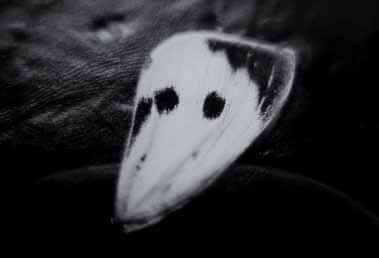The Magic of Župník’s Realism
The thirty-fourth collection of books by Fototorst contains the best of Peter Župník’s (1961) works. The author of the book’s foreword is an art historian, Lucia L. Fišerová (1977), who first presented him in Fotograf two years ago with portfolio (No. 12). Even though this is Župník’s third album, I will still permit myself to extend my reflections beyond reliable, book-ordered observations.
Were Peter Župník to become immediately one of the most remarkable representatives of Slovak photography of the 1980s at Prague’s FAMU, as the book by Viktor Stoilov’s publishing house advertises, then we have to look mainly at the question: why did he stand out so much? In the monograph’s introduction we read about Župník’s peers and his countrymen. Their names turned into creative brands a long time ago: Stano, Stanko, Švolík, Prekop, Varga… The free-thinking of living images that they conceived in an era of atrophying totalitarianism did not come off as evasiveness. The disinterest of using artistic activities in participating in non-artistic services was sensed as a liberating impulse and the lightness of Slovak nature tore many Czech artists apart. Župník, however, unmistakably differs from his aforementioned colleagues, who studied with him in Prague. Contrary to the, generally static, mid-range format cameras that they used, he builds on the possibilities of more immediately ready apparatuses. No wonder since he preferred to capture passing moments and mental motivations. Theoretician Fišerová understandably refers in her study of Župník to photojournalism geneses or starting points. However, she devotes more time to the artist’s shifts of images beyond the boundaries of reality, as he enters his enlargements with a paintbrush.
The Slovak culture transformed into its assets the fact that the remainders of the past – mainly in the form of the pureness of photographic technology – don’t block things up as much as they do in Czech culture, which is much more tied up by the bond of its own classic works. Although Slovak revitalisation of Surrealism took place with a delay, it does not lack innovation. Among other things Župník is quite an interesting example, here. In addition to this Slovaks benefited from many other foreign ideas: Abstraction, Art Brut, Opart, Conceptualism, Pop-art… If Modernism emancipated photographers from being artists, then by overcoming this they shifted attention to the creation of singular artefacts read in the gallery sphere. Isn’t that a paradox? Internationalism and progress stood as a valid appeal to the inter-war Avant-Gardes. Slovakia was no exception. Nonetheless, it seems that many artists rooted there react to estrangement. Just look at Župník’s recollection of a child’s paradise in Spiš in one of the interviews cited by his monographist: “The sun was shining, the Tatra Mountains on one side, the Rudohoří (Red Mountains) on the other, at home a black and white kitten and thaumaturgic Spiš all around …” Here it is suitable to recall another fateful circumstance: in 1995 Župník moved to Paris and there, as father of three children, he remained.
Peter Župník belongs rather loosely, and mainly generationally, among representatives of Slovak Post-modernism. (In fact neither of his parents were Slovak). Perhaps he is inclined to the spheres of creative (artistic) imagination and with the genetic technologies of colouring and colour enhancement (completion) he aligns commercial steps with his favourite figural expressions. I consider it decisive that he rarely speculates. He keeps himself in a romantic meeting with the surprise of fantasy. He does not work in a studio according to sketches, at best he moves still-life building blocks into the line of sight. Peter follows an inner vision. He often dates his works twice: the first year refers to when the negative was created, the second to final production of the positive. Or also to a breaking point in the form of a title.
#16 Photography and Painting
Archive
- #45 hypertension
- #44 empathy
- #43 collecting
- #42 food
- #41 postdigital photography
- #40 earthlings
- #39 delight, pain
- #38 death, when you think about it
- #37 uneven ground
- #36 new utopias
- #35 living with humans
- #34 archaeology of euphoria
- #33 investigation
- #32 Non-work
- #31 Body
- #30 Eye In The Sky
- #29 Contemplation
- #28 Cultura / Natura
- #27 Cars
- #26 Documentary Strategies
- #25 Popular Music
- #24 Seeing Is Believing
- #23 Artificial Worlds
- #22 Image and Text
- #21 On Photography
- #20 Public Art
- #19 Film
- #18 80'
- #17 Amateur Photography
- #16 Photography and Painting
- #15 Prague
- #14 Commerce
- #13 Family
- #12 Reconstruction
- #11 Performance
- #10 Eroticon
- #9 Architecture
- #8 Landscape
- #7 New Staged Photography
- #6 The Recycle Image
- #5 Borders Of Documentary
- #4 Intimacy
- #3 Transforming Of Symbol
- #2 Collective Authorship
- #1 Face



